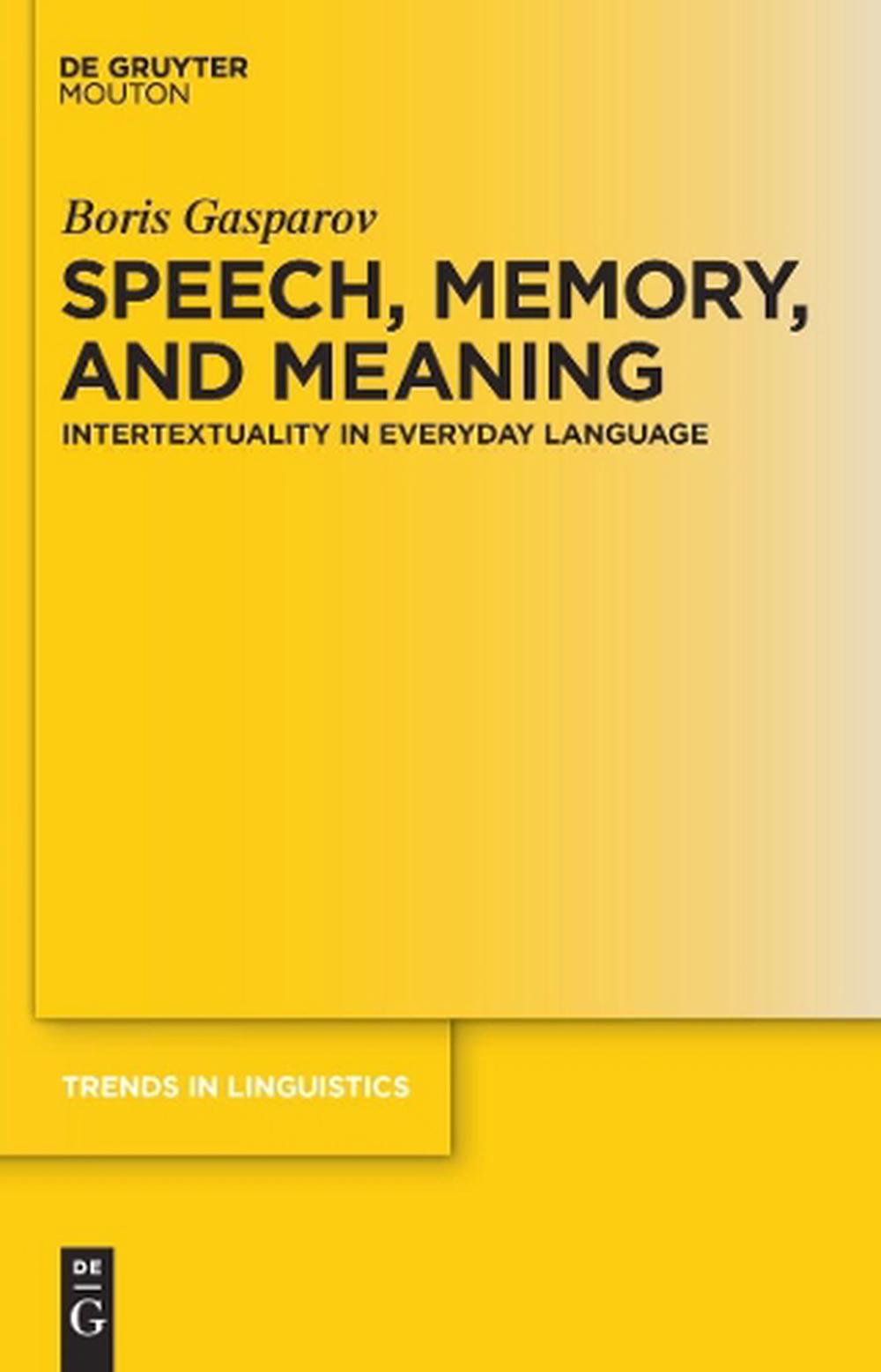
Speech, Memory, and Meaning
by Boris Gasparov
The book introduces the concept of intertextual memory into the domain of linguistic theory. All new facts of speech are grounded in the speakers' memory of previous experiences of using language. The new meaning is shown to be always superscribed on the familiar and recognizable, as its more or less radical alteration.
Hardcover
English
Brand New
Publisher Description
The book pursues a usage-oriented strategy of language description by infusing it with the central concept of post-structural semiotics and literary theory - that of intertextual memory. Its principal claim is that all new facts of language are grounded in the speakers' memory of previous experiences of using language. It is a "speech to speech" model: every new fact of speech is seen as emerging out of recalled fragments that are reiterated and manipulated at the same time. By the same token, the new meaning is always superscribed on something familiar and recognizable as its (more or less radical) alteration. The model offers a way to describe the meaning of language as an open-ended process, the way the meaning of literary works is described in modern literary criticism. The basic unit of the intertextual model is the Communicative Fragment (CF). A CF is a fraction of speech of any shape, meaning, and stylistic provenance, which speakers recognize and, as a consequence, treat as a whole. Its chief attributes are a prefabricated shape, an integral meaning (i.e., perceived as a whole whose scope always goes beyond the analyzable), and a specific communicative "texture" alluding at a speech genre, a tangible speech situation, and profiles of the speaker and the implied addressee. Although a CF has a recognizable shape, it is not as definitively set as that of stationary linguistic signs (words and morphemes). A CF can be tempered with, truncated or expanded, adapted to and fused with other CFs. The book describes in detail typical devices by which speakers manipulate their resources of linguistic memory, whose ever-new constellations in speech create infinite possibilities for new variations and shades of meaning. The book is of interest to linguists in such diverse fields as Cognitive Linguistics, discourse analysis, functional linguistics, language pedagogy, translation studies, semiotics, and the philosophy of language.
Notes
Exklusives Verkaufsrecht für: Gesamte Welt.
Author Biography
Boris Gasparov, Columbia University, New York, USA.
Review
"Auch und gerade fur die Erklarung von fachsprachlicher Bedeutungskonstitution besitzt das Modell des 'intertextual memory' eine grosse Relevanz."Thorsten Roelcke in: Germanistik 3/3/2010
Long Description
The book pursues a usage-oriented strategy of language description by infusing it with the central concept of post-structural semiotics and literary theory - that of intertextual memory. Its principal claim is that all new facts of language are grounded in the speakers' memory of previous experiences of using language. It is a "speech to speech" model: every new fact of speech is seen as emerging out of recalled fragments that are reiterated and manipulated at the same time. By the same token, the new meaning is always superscribed on something familiar and recognizable as its (more or less radical) alteration. The model offers a way to describe the meaning of language as an open-ended process, the way the meaning of literary works is described in modern literary criticism. The basic unit of the intertextual model is the Communicative Fragment (CF). A CF is a fraction of speech of any shape, meaning, and stylistic provenance, which speakers recognize and, as a consequence, treat as a whole. Its chief attributes are a prefabricated shape, an integral meaning (i.e., perceived as a whole whose scope always goes beyond the analyzable), and a specific communicative "texture" alluding at a speech genre, a tangible speech situation, and profiles of the speaker and the implied addressee. Although a CF has a recognizable shape, it is not as definitively set as that of stationary linguistic signs (words and morphemes). A CF can be tempered with, truncated or expanded, adapted to and fused with other CFs. The book describes in detail typical devices by which speakers manipulate their resources of linguistic memory, whose ever-new constellations in speech create infinite possibilities for new variations and shades of meaning. The book is of interest to linguists in such diverse fields as Cognitive Linguistics, discourse analysis, functional linguistics, language pedagogy, translation studies, semiotics, and the philosophy of language.
Review Text
"Auch und gerade f
Details

